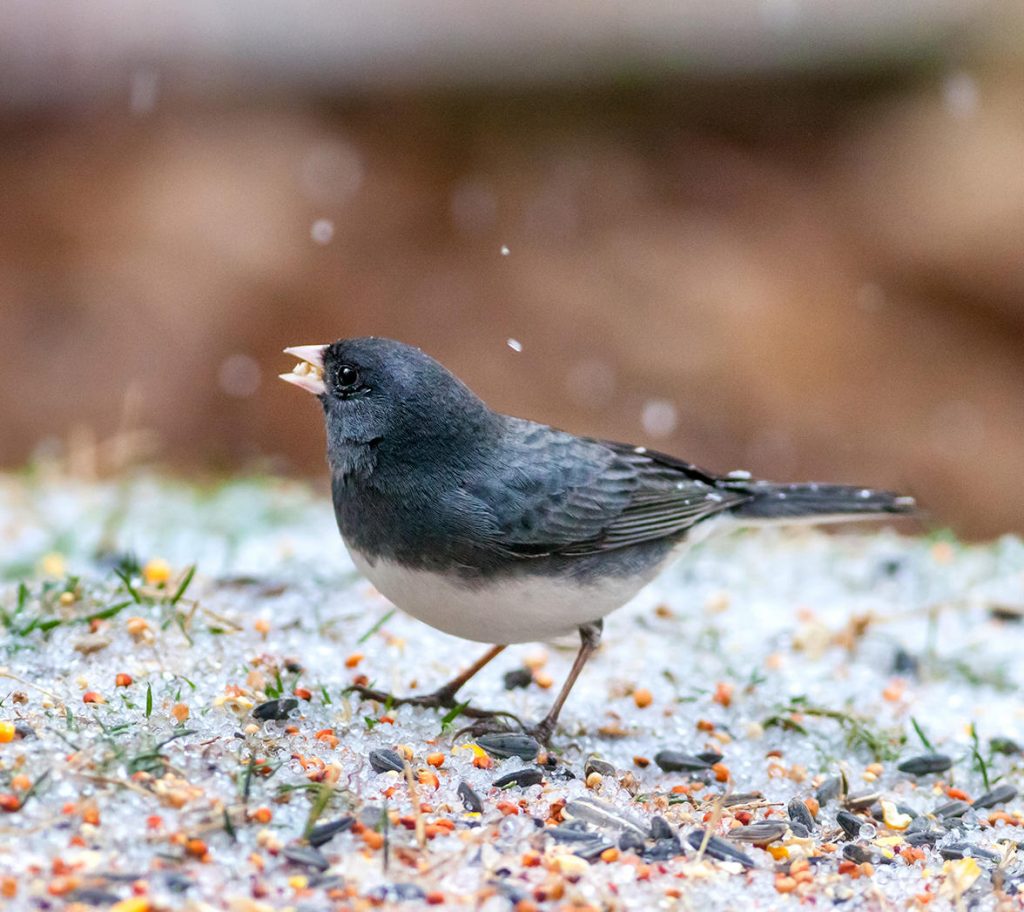By Ashely P Taylor, Audubon, Birds in the News, October 6, 2020
Fall may mean migration, but one bird’s north is just another bird’s south.

Sad some of your favorite birds are going south for the winter? Don’t worry—others are coming to take their places. As birds that breed in the lower 48 states head to Central and South America, those from the boreal forests of Canada and Alaska are also heading south in search of warmer climes. One study found that in California’s Central Valley, there are just as many different bird species around in the winter as in the summer.
While there isn’t good data showing whether this seasonal trade-off is just as balanced in other locales, “winter visitors” can be found all over the country, says Jeff Wells, Science and Policy Director for the Boreal Songbird Initiative. “There’s this massive sea of a billion or more birds that come down into the U.S. and become, often, the common birds of backyards and parks and lakes and ponds,” says Wells. “Yet we don’t think so much about where they’re coming from and what their needs are.”
Helping these winter visitors out could help sustain their populations in both their wintering and summering grounds. Birds have the same needs—food, water, shelter—in winter as they do any other time. Winter habitat has also been shown to affect breeding success, according to studies on tropical-wintering birds, and the same could be true for the boreal birds wintering here, says Kristen Dybala, who led the California study. If the birds don’t find quality habitats with good food, their health suffers, Dybala explains, and it may take them longer to gather the energy to migrate back to their breeding grounds. When they finally arrive, the best breeding spots might be taken. “Each stage of the annual cycle kind of depends on the previous one,” says Dybala. Basically, it’s a snowball effect.
While conservationists tend to pay the most attention to habitats during breeding season, “there’s this whole other season that we haven’t been paying nearly as much attention to, and there may be opportunities to do a better job providing higher-quality habitat during the winter,” Dybala says.
So what can you do to welcome the boreal birds to your backyard this winter? Here are some tips from Stephen Kress, who directs Audubon’s Project Puffin.
Create a songbird border of native trees and shrubs to shelter your yard from the wind. Choose berry-producing landscape plants, such as juniper trees and shrubs like dogwood, serviceberry, and viburnum; many boreal birds, such as the Cedar Waxwing, the Yellow-rumped Warbler, and several sparrow species, eat berries during the winter. Fall is the perfect time to plant, says Kress—though be sure to put wire-mesh cages around the new plants to protect them from mice, deer, and rabbits.
Make a brush pile in the corner of the yard to shelter the birds from predators and storms and to provide night roosting places. Put logs and larger branches on the bottom and layer smaller branches on top.
Rake leaves up under trees and shrubs—and leave them there. The resulting mulch will make a lush environment for the insects and spiders that these birds, such as the Savannah Sparrow and Golden-crowned Sparrow, like to eat.
Turn part of your lawn into a mini-meadow by letting it grow up in grass and weeds. (Mow it once a year, in late summer.) Seed-eating boreal visitors, including several sparrow species and the Dark-eyed Junco, will benefit from your letting things go literally to seed. “In general, overly tidy gardeners are poor bird gardeners,” Kress writes in The Audubon Guide To Attracting Birds.
For other tips on how to make your property hospitable to birds, check out How To Make Your Yard Bird-Friendly, Make Migration-Friendly Window Decorations, and, of course, Kress’s book.